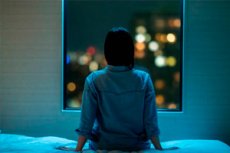New publications
Sleep deprivation increases pain differently in men and women: The role of basic sleep quality
Last reviewed: 09.08.2025

All iLive content is medically reviewed or fact checked to ensure as much factual accuracy as possible.
We have strict sourcing guidelines and only link to reputable media sites, academic research institutions and, whenever possible, medically peer reviewed studies. Note that the numbers in parentheses ([1], [2], etc.) are clickable links to these studies.
If you feel that any of our content is inaccurate, out-of-date, or otherwise questionable, please select it and press Ctrl + Enter.

Researchers from the University of Southern Denmark, led by Elisabeth D. Ragnvaldsdottir Joensen, published the results of a large crossover study in the European Journal of Pain, assessing the effects of three nights of interrupted sleep on pain sensitivity in healthy men and women.
Study design
- Participants: 40 healthy volunteers (20 men and 20 women) aged 20–35 years without chronic pain or somatic diseases and without sleep disorders.
- Conditions: Each participant underwent two periods of three nights of “normal” sleep (7–8 hours of uninterrupted sleep at home) and sleep disruption (three consecutive nights, each with at least three purposeful awakenings and reduced sleep to 4–5 hours). The periods were separated by a “washout” interval of two weeks.
- Pain assessments: Before and after each three-day cycle, participants completed quantitative sensory testing (QST):
- Pressure: Pressure threshold (PPT) was measured bilaterally on the suprascapular and soleus muscles.
- Heat: heat pain threshold (HPT) at the same sites.
- Self-reports: daily sleep diary (PSQI) and pain score (0–10).
Key Results
Universal pain enhancement. After three nights of disruption, PPT decreased by an average of 18% and HPT decreased by 12% (p<0.01) compared to the condition after normal sleep.
Gender differences.
Women demonstrated a greater reduction in PPT (−22% vs. −14% in men; p=0.02).
The reduction in HPT was comparable in both sexes, but women with poor baseline sleep were particularly affected (see below).
The influence of initial sleep quality.
In participants with PSQI >5 (i.e. “poor baseline sleep”), PPT dropped by 25%, while in “good sleepers” (PSQI ≤5) it dropped by only 12% (p<0.01).
HPT decreased by 16% in “poor sleepers” versus 8% in “good sleepers” (p=0.03).
Interaction of gender and sleep.
Women with poor sleep quality showed the greatest deterioration, with up to a 30% reduction in blood pressure threshold, almost twice as much as men with initially good sleep.
Mechanisms and explanations
The authors associate increased pain with sleep deprivation with:
- Disruption of endogenous pain modulatory systems, including decreased activity of the internal pain suppression process (Conditioned Pain Modulation).
- Increased pro-inflammatory cytokines and imbalance of neurotransmitters (serotonin, dopamine) due to continuous awakenings.
- Sex hormones: estrogen increases central sensitization, which explains the greater vulnerability of women.
Clinical and practical implications
- Personalizing pain treatment: When working with patients complaining of pain, it is important to consider their sleep status prior to starting therapy, as well as their gender.
- Sleep hygiene recommendations: Preventing sleepless nights and minimizing night awakenings can reduce the risk of worsening both acute and chronic pain.
- Special risk group: Women with already poor sleep need special attention - a combination of cognitive behavioral therapy for sleep and pain medication may be more effective.
Prospects
The authors call for further randomized clinical trials that:
- They will assess the impact of sleep disturbance on chronic pain (arthritis, fibromyalgia).
- They will study biochemical markers of pain and inflammation before and after sleep.
- Combined interventions aimed at improving sleep and reducing pain sensitivity will be developed.
"Our study shows that not only the amount of sleep, but also its continuity, as well as gender and baseline sleep quality, significantly influence pain responses," concludes E. D. Ragnvaldsdottir Joensen. "This opens up new avenues for personalized pain medicine."
At the end of the article, the authors emphasize several important points:
Women's vulnerability to poor sleep
"Our data show that women with poor sleep quality to begin with are particularly sensitive to painful stimuli after several interrupted nights," says Elisabeth D. Ragnvaldsdottir Joensen.The role of sleep continuity
“It is important to understand that it is not just sleep duration but sleep fragmentation – multiple awakenings during the night – that is the key to increasing pain sensitivity,” adds co-author Dr. Mads Hansen.The need for personalised strategies
“Our results suggest that in the clinic, the patient’s baseline sleep and possible sleep disturbances need to be taken into account when planning pain-relieving interventions – especially in those who already complain of chronic pain,” emphasises Dr Sofia Larsen.Further research
“We now need to study how these effects play out in patients with real chronic pain conditions and the extent to which sleep hygiene can serve as an independent non-pharmacological pain therapy,” concludes the project’s lead statistician, Dr. Erik Knudsen.
